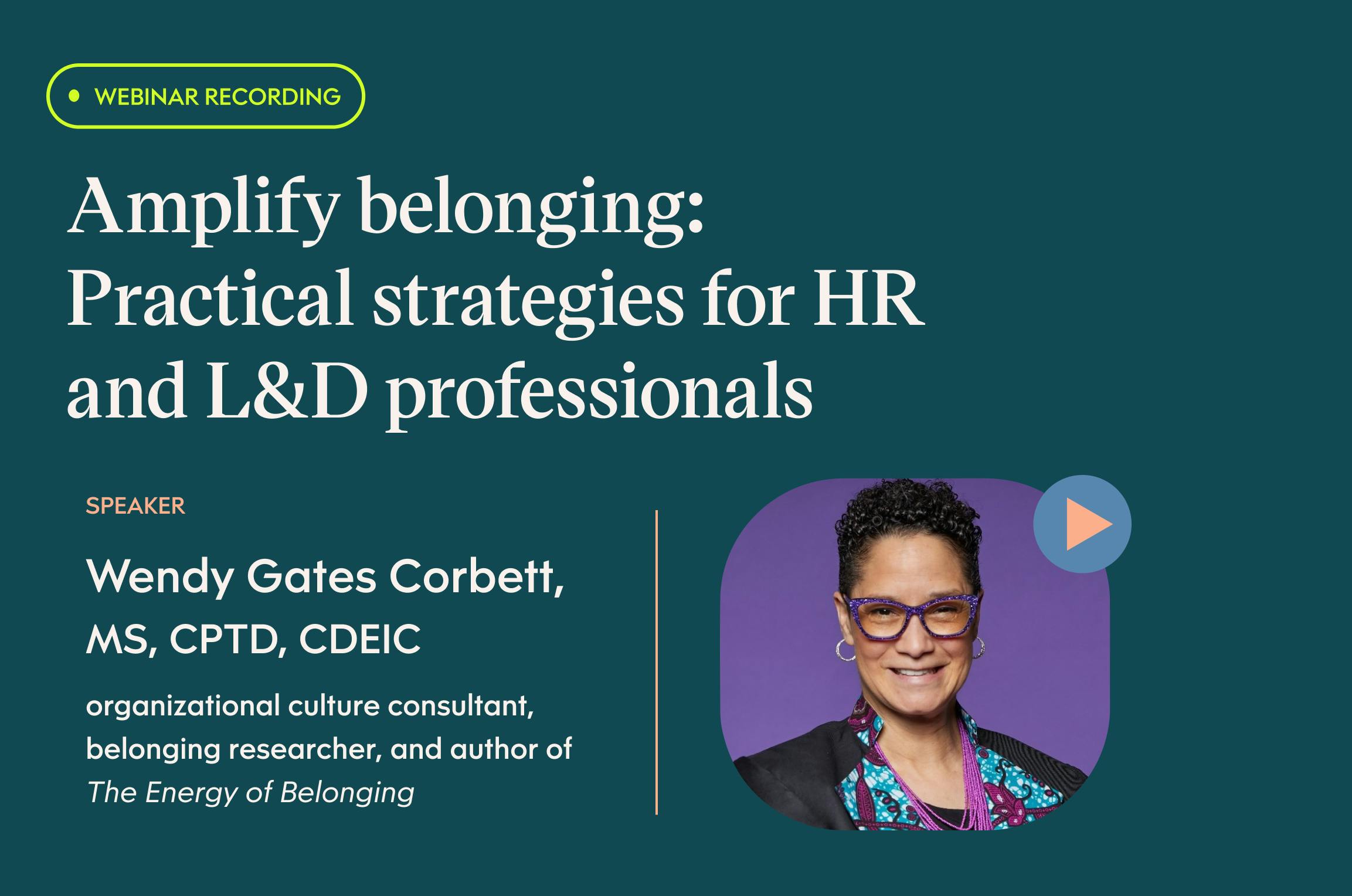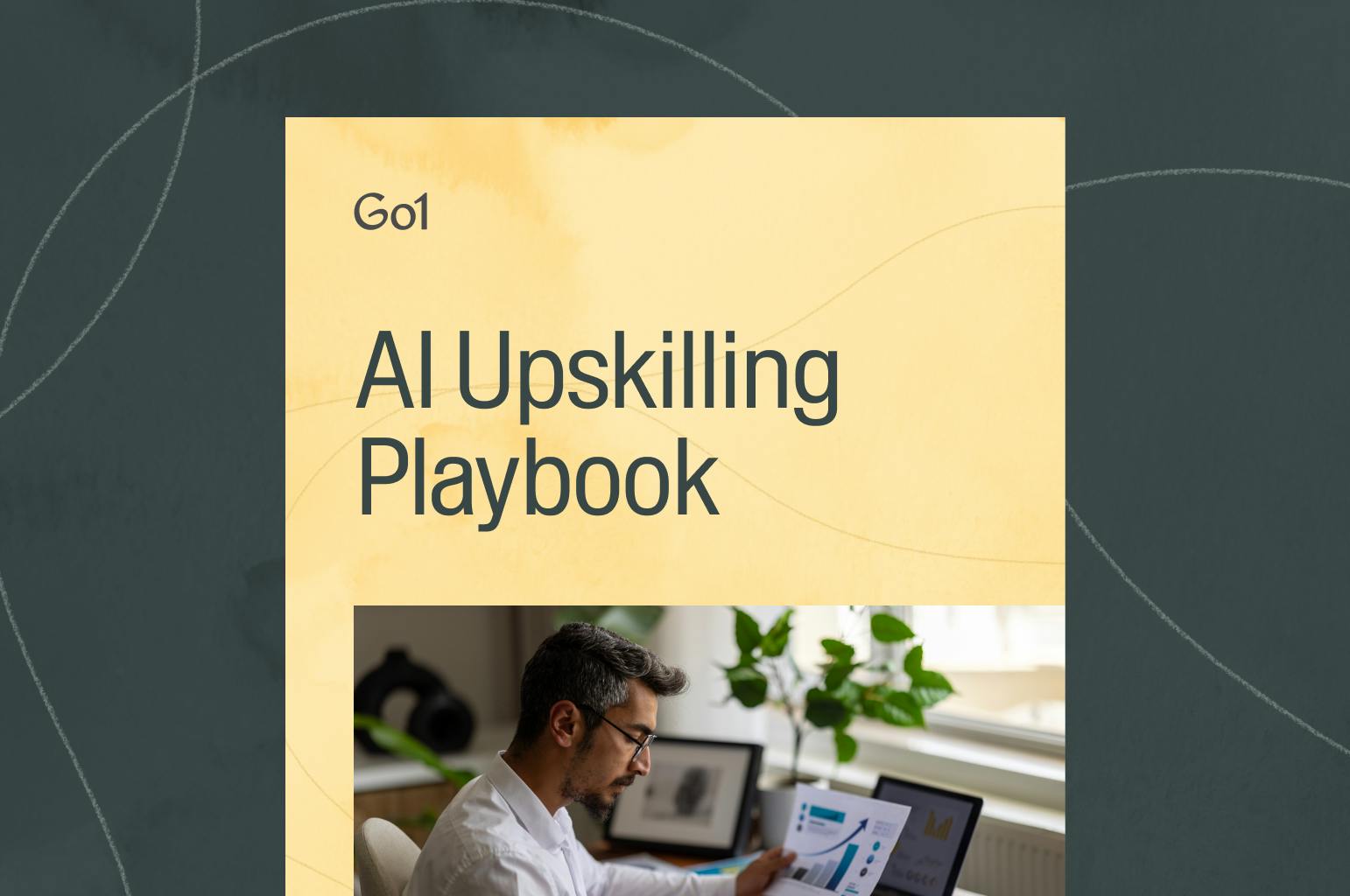Amplify belonging: Practical strategies for HR and L&D professionals

As workplaces continually shift and change, cultivating belonging on your team is more important than ever. In our recent webinar, Wendy Gates Corbett, author of The Energy of Belonging, available on Blinkist, provided research-backed insights into how HR and L&D professionals can help employees feel connected, respected, and protected.
In a previous role, Wendy found that despite her best efforts to connect with colleagues, her coworkers seemed uninterested in building relationships. This left her feeling like she didn't belong in the organization. As a result, Wendy stopped actively participating at work and eventually left her job feeling like a failure.
This experience led Wendy to ask the question: What is it that creates a culture of belonging in the workplace? She compiled a survey about belonging at work and has received nearly 3,000 responses, and counting. Wendy has used these responses to build the following framework, designed to help teams and leaders grow and strengthen a sense of belonging in their business.
What does it mean to belong?
Belonging is an outcome, but it's also an emotion. It's about creating a space where employees feel genuinely appreciated and integral to the organizational fabric. Wendy leveraged the results from her survey to create her own definition of belonging. According to Wendy, belonging is "the sense of security and support that results from feeling welcomed, valued, accepted, and safe as a part of something meaningful that’s larger than ourselves," but explains there is always room to add another comma to build on this definition.
From her research, Wendy has also identified three common themes essential to nurturing belonging: connection, respect, and protection.
Building connections
Connection is the lifeline of employee engagement. To feel like they belong, employees must feel connected to both their colleagues and the organization as a whole. They need to feel seen and heard, and believe that their coworkers are genuinely interested in them.
Wendy highlighted a few practical strategies to enhance interpersonal relationships within the workplace, like remembering personal details about coworkers, engaging in meaningful conversations unrelated to work, and sharing funny moments together. These small yet impactful actions have the potential to build deeper bonds among colleagues, fostering a stronger sense of community.

Here at Go1, we have tons of interest-based Slack channels — including channels where employees can post photos of their pets, chat about a cause they’re passionate about, and share their hobbies. These are great spaces for our remote workforce to connect over common interests, get to know colleagues outside of their team, and have conversations completely unrelated to work.
Cultivating respect
Respect isn't just about acknowledging someone's skills but also valuing their contributions to the organization. Wendy emphasized the role of leadership in embodying and promoting respect through transparent communication and consistent actions. This not only uplifts morale but also encourages a culture of mutual appreciation and acknowledgment.
Wendy noted that employees must be respected not only by leadership but also by their peers. Colleagues can show respect by asking each other for advice or input and expressing appreciation for their work. Getting to know your coworkers makes all the difference here — while some team members may prefer to be thanked for a job well done publicly, others may prefer a private message or email. Paying close attention to these details demonstrates a level of care and consideration that fosters a positive and respectful work environment.

Ensuring protection
Protection, or psychological safety, is crucial for employees to express their thoughts and perspectives without fear of retribution. In psychologically safe workplaces, employees feel comfortable engaging fully, experimenting, and bringing innovative ideas to the table — which are all elements of a healthy organization. In the webinar, Wendy explored how creating a safe space for open dialogue encourages innovation and honesty, which are critical for organizational growth and development.
For employees to feel safe at work, they need to trust that they're being treated fairly and that their colleagues are being as transparent with them as possible. It's also important for individuals to realize that they may be doing something that makes someone else uncomfortable and be open to that feedback. For example, you might copy a colleague’s manager into an email simply so they have insight into a project — but it may make that colleague feel like you don’t trust them to manage the project on their own.
Employees can foster a sense of safety by backing each other up, aligning their actions with their words, and being careful not to interrupt colleagues, which is common, especially in remote settings. Remember to listen to understand, not listen to respond.

Measure engagement to track your progress
It's crucial for organizations to measure the effectiveness of their belonging strategies so they know what’s working and where they need to take a new approach. Wendy emphasized the importance of using existing metrics and tools to assess the levels of engagement and belonging among employees.
For example, regular feedback and surveys can provide invaluable insights into whether your team feels connected, respected, and protected. You might also consider developing and implementing a leadership program that enables your leaders to be more intentional about creating a culture of inclusivity and belonging.
Belonging starts with you
Whether you're a leader working to create a culture of belonging, an employee whose team members have checked out, or if you yourself are struggling to feel a sense of belonging at work — you can do your part to create the environment you want to be a part of. By being a catalyst for belonging in your workplace, you'll drive the change towards a more inclusive and engaging environment. Choose one or two of the examples Wendy outlined, start practicing them with your team, and you'll be on your way to making a tangible difference in your organization.
Watch the full webinar to learn from Wendy how you can make a huge impact on how included and comfortable your team feels at work, even in the smallest of ways.
Want more strategies to create a supportive environment that boosts your team’s mental health while simultaneously increasing productivity and job satisfaction? Check out our article on building a wellness-focused workplace.
Related Articles

Application Guide: How to use the Go1 AI for L&D Maturity Assessment to assess our workforce AI capability

AI upskilling made clear: A practical guide to building an AI-ready workforce

Go1 welcomes PepTalk

5 Data-Backed Insights Shaping the Future of AI in Workplace Learning

Train smarter, spend less
Train smarter,spend less
Connect with a Go1 expert to explore the best training options for your organization—no pressure, just solutions that work.